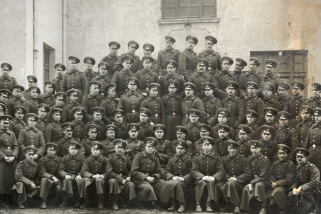Conference “Identities In-Between: East-Central Europe, c. 1900-present”
Wolfson College, Oxford, 12-13 September 2016
Deadline for proposals: 1 June 2016
This two-day conference invites submissions for 20-minute papers that engage with a specific definition of ‘sub-cultures’ (see below) through case studies drawn from the East-Central European region, over the period c. 1900-present Funding is available for travel and accommodation in Oxford for accepted submissions, with details to follow. Participants may be invited to contribute to a summative volume or special edition on the titular subject.
Interrogating the notion of ‘identity’ remains a central concern in Humanities and Social Sciences research. For East-Central Europe, the subject has particular resonance: this was a region forged in diversity, remade after 1945 along ethno-national lines, and which in the present, continues to resist alternative narratives. The conference concludes a four-year research project that proposes a new definition of the term ‘sub-cultures’ to understand identities that do not conform to the fixed, standard categories imposed from the top down, such as ‘ethnic group’, ‘majority’ or ‘minority’. Instead, a ‘sub-culture’ is an identity that sits between these categories. It may blend languages, e.g. dialect forms, cultural traditions, or ethnic identifications. It may be drawn on particular conceptions of race and biology that, similarly, sit outside national projects, or else in the interstices. In short, a ‘sub-culture’ in these terms is not ‘subaltern’, but is an identity resisting complete incorporation into the standard categories of ‘majority’ and’minority’. The region offers many examples of such identities: among working-class inhabitants of Lodz or Lviv in the early 20th Century, with their mixed dialect practice; Germans who lived in Wroclaw after the city became Polish in 1945, with their blended tradition and mixed identifications. A full definition of the term and a working case study can be found in the article by Robert Pyrah and Jan Fellerer, ‘Redefining ‘sub-culture’: a new lens for understanding hybrid cultural identities in East-Central Europe with a case study from early 20th century L’viv-Lwów-Lemberg’, Nations and Nationalism, Volume 21, Issue 4, pp. 700–20, October 2015. DOI:10.1111/nana.12119. Further information on the project, the concept, and its evolution may also be found on the dedicated website To help participants select their topics, we propose a number of governing themes, which may cut across disciplines:
Uses of history, memory, myth and tradition;
Ritual practice, religion and religious observance;
Minority policies ‘from above’
Subjective experiences among groups / populations ‘from below’
Linguistic forms and practice
Biology and essentialism
However, these themes are neither exclusive nor prescriptive. Submissions: please include your name, title, the title of your presentation, and a short abstract (up to c. 500 words) to the address: subculturesoxford@gmail.com Informal enquiries: these may be made to robert.pyrah@]history.ox.ac.uk













